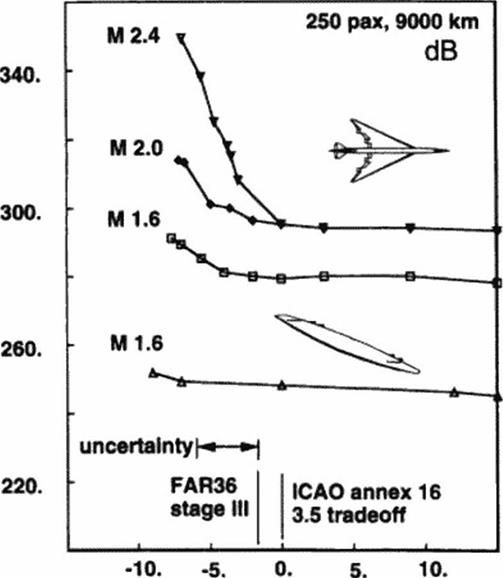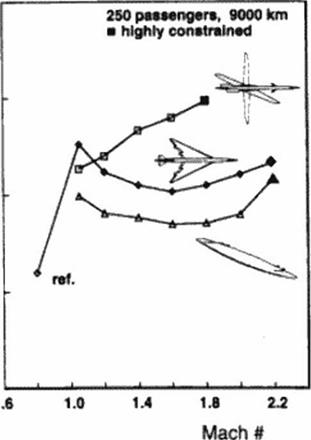THE OBLIQUE FLYING WING TRANSPORT
A. Van der Velden
Synaps Inc., Atlanta, GA, USA
19.1 Introduction
in the last thirty-five year» there have been numerous attempts to design an economical large long range supersonic transport aircraft. However, aircraft design teams around the world have not been successful at designing a ‘Concorde’ type large long range supersonic transport with realistic technology assumptions. It therefore seems only natural to look for other configurations that might fullfil this specification The oblique flying wing configuration presented in this paper is unusual but we will show that it makes sense from both a technical and economical perspective.
Figure 115 shows the first oblique wing design. It was proposed by two Frenchmen. Edmond de Marcay and Emile Moonen around 1912 [402). They saw the oblique position of the wing as a means to land the low speed aircraft of their time in the presence of crosswind without sideslipping the wing. In the decades to follow oblique wings were used to simulate sideslip in a windtunncl. It was not until 1943*1944 that engineers at Mcsscrschmitt and Blohm & Voss combined the newly discovered phenomena of high speed drag reduction and wing sweep with the ‘old’ sideslipping wing. After WWII Richard Vogt of Blohm & Voss showed the oblique wing designs to R. T. Jones of NACA. Dr. Jones became convinced of the merits of this configuration and has actively pursued it until today During the 1960’s and 1970’s he convinced many engineers at NASA. Boeing and Rockwell to study this exotic aircraft.
|
Figure 115 First Oblique Wing Design (Courtesy: Steve Ransom) |
Figure 116 shows the AD-1 the first full scale oblique wing aircraft designed by Burt Rutan. On the 21 December 1979 the AD-1 this aircraft made its first flight. Though the oblique wing-body was a success from a controls and aerodynamics point of view, it had poor structural qualities. The increase in structural weight due to the routing of the loads through the center pivot was not offset by the high-speed drag reduction.
|
Figure 116 AD-1 by Rutan (1979> |
In 1958, R. T. Jones and Lee of Handley Page (399) had proposed an even radical design that could overcome the high structural weight of the oblique wing body concept. Even though the design shown in Figure 117 was considered interesting, few have researched it since it was first proposed.
|
Figure 117 Lee’s Slewed Wing Transport Proposal (1961) |
The only research on this configuration – as known to the author – was done by Smith
[401] in the U. K. and R. T. Jones in the U. S.A. As shown, the aircraft cannot be controlled due to its aft center of gravity position, even with todays artitical stabiliration technology. Because the payload does not efficiently fit the available volume, the aircraft is too small for efficient super – some flight. As a consequence the configuration of Figure 117 was in many ways inferior to the Concorde, as Dr. Kuchemann [398] correctly predicted at the time.
In 1987 Dr. Jones [397] and the author (403J proposed a new oblique flying wing design that takes advantage of the controls and oblique w ing knowledge accumulated in the lost four decades. In the last eight years we have learned far more about the design, but its basic layout has remained nearly unchanged. Figure 118 shows the latest version of the design. The present paper describes the state of the an of this oblique flying wing configuration and is largely based on the author’s PhD thesis [405) at Stanford University.
|
Figure 118 Jones’ and Van der Velden’s concept 1987 . 1994 |











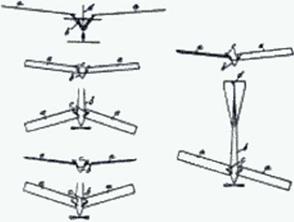
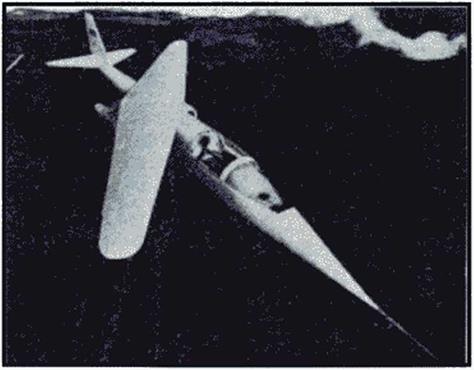
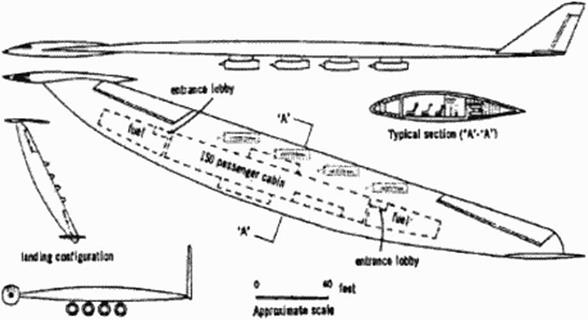
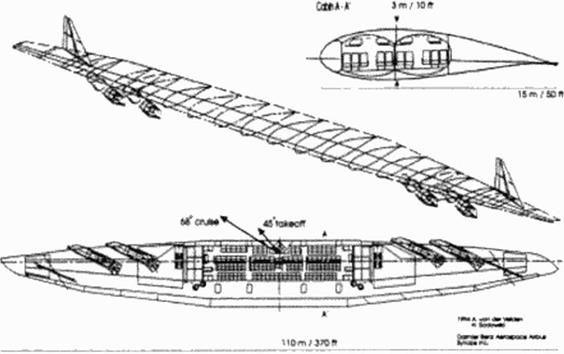
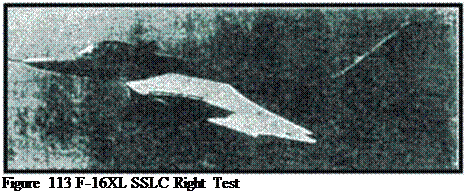
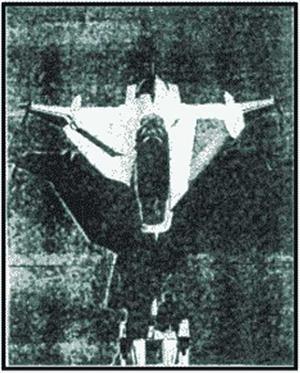






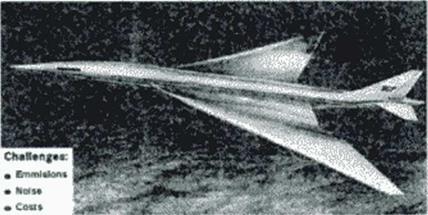

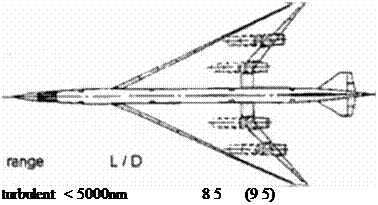 large wng area
large wng area